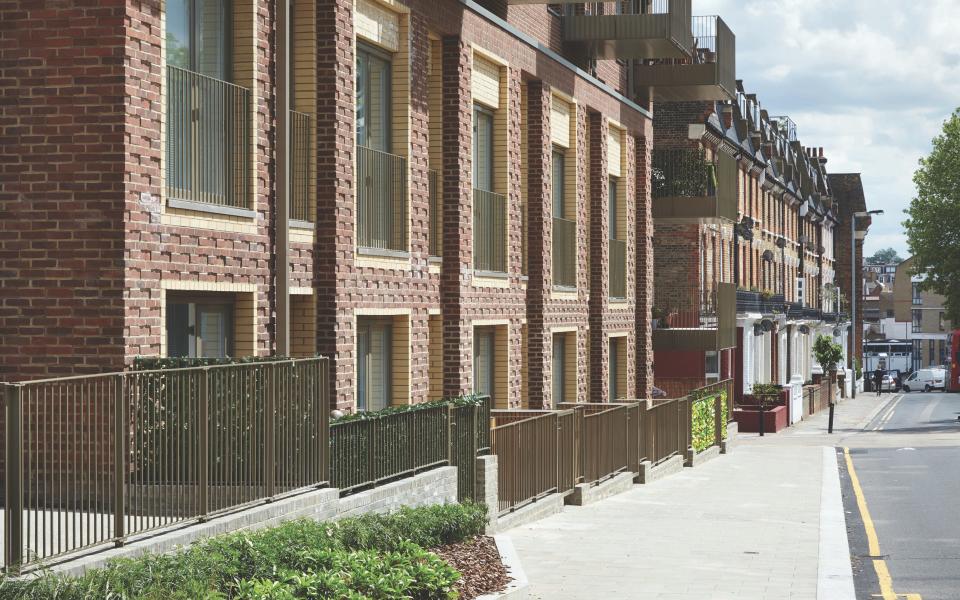A new sense of ambition: housing associations step in to the breach
After years of being ignored, housing associations have been embraced by a Government desperate to build more homes and help people onto the housing ladder.
They were responsible for erecting 30,680 homes last year, and manage 2.7m across the UK. A report by Savills in 2016 found that provided there is some kind of subsidy, housing associations have the capacity to double the number of homes they build, delivering up to a total of 84,000 a year by 2029.
One of the housing association London & Quadrant’s current projects is Barking Riverside, which will eventually provide a new village the size of Windsor in east London, with 11,000 homes, a new train station and five schools.
It has a 50pc stake in the site, bought from the house builder Bellway, which was producing just 150 homes a year. L&Q will build its half four times more quickly than would otherwise have been possible, thanks to the greater variety of homes it builds.
120,000
The number of homes housing associations could be building per year, according to Savills
In last year’s autumn statement, the Chancellor of the Exchequer announced a £1.4bn injection into the affordable homes programme, and a package of £3.15bn for London to build 90,000 low-cost homes, the biggest deal ever made between the Government and City Hall.
The chief executive of L&Q, David Montague, right, views the policy shift as a call to arms. “They have given us what we asked for and now expect us to deliver. It feels like this sector has crossed a line.”
This is a stark change from the previous Conservative government, which promoted private home ownership enthusiastically without significantly increasing supply. Montague is a leader in the sector, chairing the G15 of London’s biggest housing associations, which claims to house one in every 10 Londoners. L&Q currently manages 72,000 homes across London and the South East, having grown from humble beginnings 53 years ago when a south London clergyman started the charity with just £64.
In the past few months L&Q, now a £12bn business, has merged with East Thames housing association, agreed a £2.6bn refinancing package, and set a target of building 100,000 new homes, half of which will be “affordable”, over the next 10 years.
Last month it snapped up Gallagher Estates, a business which buys land, prepares it for building by obtaining planning permission, and then sells it on to house builders. This will double the 43,000 plots it had before, so it now has 86,000, against its target of 100,000 homes.
The deal will also give L&Q first refusal on any site Gallagher acquires, before it is offered to other house builders. Montague says: “It’s a defining moment for the sector, it says something about our capability, our commitment to solving the housing crisis,” he says. “We’re feeding the raw materials into this development engine.”
The sector reconnected with its ambition and social purpose and we are seeing something of a renaissance
James Murray, London’s deputy mayor for housing, says: “I have been really struck by the ambition and commitment of housing associations over the last few months. They are crucial partners for us in delivering affordable housing.”
This ambition has not gone unnoticed by investors either, Montague says. In 1988, Margaret Thatcher allowed them to seek private finance, as grant contributions were gradually slimmed down to nothing.
“There’s a wall of money that wants to invest in housing associations, and the cost of borrowing for us is at an historic low,” Montague says, getting ready to ask for £1bn later this year.
“The vast majority will come from bond markets. It’s a really easy way for us to raise money.
“Post-referendum, investors were selling shares and buying gold; they were also buying housing association debt, because it is backed by assets, we’re a regulated sector, and there’s this big chunk of government grant in our balance sheet which acts as a cushion against default. To some extent our rents are supported by housing benefit as well.”
There’s a wall of money that wants to invest in housing associations, and the cost of borrowing for us is at an historic low
Housing associations, including L&Q, are increasingly edging into the burgeoning build-to-rent sector too, with all their experience of managing property; 25pc of L&Qs homes are for private rent.
“Loads of people want to invest in private rent but there’s nothing to invest in,” Montague says. “There are a lot of providers but they lack the land, the homes, and the scale. That is why housing associations are moving in.”

 Yahoo Finance
Yahoo Finance 



